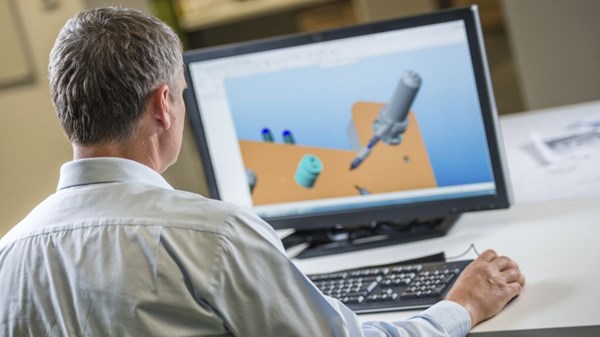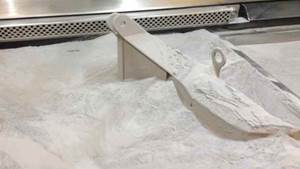The Unseen Work Unleashing AM
Many small advances allow a technology to realize its promise. In AM, here is where the advances are adding up.

Until it didn’t. For all these technologies, the moment came when the technology simply mushroomed, seeming to spread suddenly into far more widespread use than it had previously seen. Once the surge happened, we quickly grew accustomed to the use of that technology, forgetting what the challenges were that once had held us back from it.
Part of the reason we forget is because those challenges were plentiful. And, significantly, many of those challenges were small. For a technology to be adopted, it has to be not just powerful in what it can do, but also dependable and easy. And many, many impediments stand in the way of getting to the necessary levels of dependability and ease. Those obstacles include big hurdles, and also include nagging difficulties that make the technology seem too unfriendly to embrace. When a technology at last arrives, this happens not only because the price falls and the performance expands, but also because the moment finally comes when a critical mass of those nagging difficulties has been addressed and overcome.
With additive manufacturing, this is the stage we’re advancing through. Vanquishing challenges large and small is the work being done today. Many large challenges have been met, but that still leaves work to do. The small problems are being beaten through victories we do not necessarily see, because they each involve a tweak, technique or change in perspective that by itself may not seem remarkable. What manufacturers at large will see instead from this work is the cumulative effect of all these victories summing together.
As I say, the work is happening today. The victories are occurring in various areas in which people are advancing AM. In particular, I see three such areas—three largely unseen spheres in which the small but important successes are being attained. When AM for production becomes commonplace, it will partly be because of efforts being made today in these three realms:
- Software. The attention given to AM today often focuses on the process of building the part, the elaborate forms that can be made, and the useful properties of the material created this way. Against all this, the software for deploying AM gets far less attention. However, the strides software developers are making might ultimately turn AM into the most intuitive and easy-to-apply industrial part-making technology we have ever seen.
- Secret projects. When I ask manufacturers about their involvement in AM, I get the same answer repeatedly. I hear some variation on, “We’re more involved than we can tell you—we can’t talk about the experimentation we’re doing with AM.” In time, all of this secret work will come to light, and so will the knowledge gained in these projects.
- Students. This sphere promises to be the most significant of all. Among school-age children today, consider how common it has become for them to experience 3D printing or use a 3D printer. Some of the small but important challenges I’ve been discussing here are obstacles of culture or mindset, but we are on the verge of welcoming an age group that has no such disposition against AM. Indeed, these young people will assume that manufacturing is additive. How far will AM go once this group exerts its influence?
Related Content
A Framework for Qualifying Additively Manufactured Parts
A framework developed by The Barnes Global Advisors illustrates considerations and steps for qualifying additively manufactured parts, using an example familiar to those in AM: the 3D printed bottle opener.
Read More8 Cool Parts From Formnext 2023: The Cool Parts Show #65
New additive manufacturing technologies on display at Formnext were in many cases producing notable end-use components. Here are some of the coolest parts we found at this year’s show.
Read MorePostprocessing Steps and Costs for Metal 3D Printing
When your metal part is done 3D printing, you just pull it out of the machine and start using it, right? Not exactly.
Read MoreImplicit Modeling for Additive Manufacturing
Some software tools now use this modeling strategy as opposed to explicit methods of representing geometry. Here’s how it works, and why it matters for additive manufacturing.
Read MoreRead Next
Profilometry-Based Indentation Plastometry (PIP) as an Alternative to Standard Tensile Testing
UK-based Plastometrex offers a benchtop testing device utilizing PIP to quickly and easily analyze the yield strength, tensile strength and uniform elongation of samples and even printed parts. The solution is particularly useful for additive manufacturing.
Read MoreCrushable Lattices: The Lightweight Structures That Will Protect an Interplanetary Payload
NASA uses laser powder bed fusion plus chemical etching to create the lattice forms engineered to keep Mars rocks safe during a crash landing on Earth.
Read More3D Printed Polymer EOAT Increases Safety of Cobots
Contract manufacturer Anubis 3D applies polymer 3D printing processes to manufacture cobot tooling that is lightweight, smooth and safer for human interaction.
Read More


















